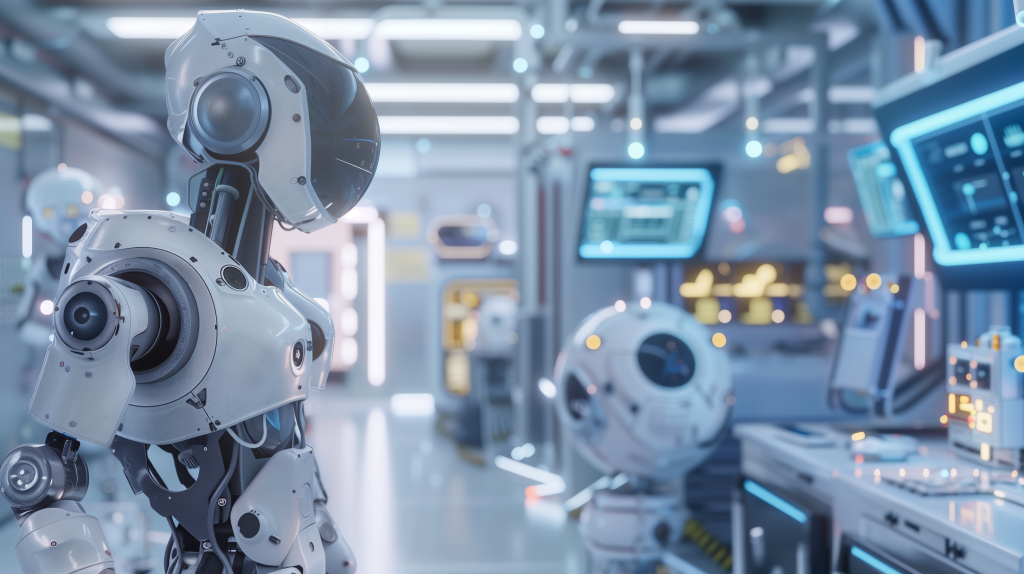The world of humanoid robotics is on the brink of a major breakthrough in 2024, with numerous projects indicating that this technology may soon become a staple in our daily lives. Companies and research institutions worldwide are working on innovative solutions that aim not only to revolutionize industrial manufacturing but also to provide support in many other areas of human life.
Agility Robotics – Pioneering with Digit
Agility Robotics, a company from the USA founded in 2016, is a leader in the development of efficient and robust robots for real-world applications. Their standout product, the Digit robot, is a bipedal, versatile robot designed to assist human workers with physically demanding logistics tasks. This could significantly relieve people and enable them to focus on more complex and creative activities.
New Partnerships and Expansion Plans
Recent developments include a partnership with NVIDIA as part of Project Crout, which aims to accelerate the development of humanoid robots and facilitate their integration into daily use. Agility Robotics has also recently appointed Peggy Johnson as the new CEO and opened a factory in Salem, Oregon, capable of producing up to 10,000 units of Digit per year.
Apollo from Aptronics – Flexibility and Efficiency
Apollo, developed by Aptronics, is another example of progress in humanoid robotics. This 5’8″ tall robot is designed for use in real-time environments and features interchangeable battery packs that enable continuous operation. Apollo aims to take on physically demanding and repetitive tasks, thus alleviating labor shortages in manufacturing and logistics.
Figure One – A New Player in the Market
A particularly exciting project is Figure One, developed by AI Robotics. This robot is designed to address labor shortages by taking on heavy or dangerous physical tasks. Figure One can autonomously navigate complex environments and intelligently interact with its surroundings, making it ideal for use in manufacturing, logistics, and retail.
These developments in humanoid robotics are just a taste of what to expect in 2024 and beyond. With their ability to seamlessly integrate into human work environments, humanoid robots are poised to play a transformative role in a variety of industries.
Further Advances in Humanoid Robotics
Advancements in humanoid robotics continue with impressive innovations. Here are some additional highlights that underscore the potential of this technology.
Unitary Robotics – The Unry H1
A standout representative of the new generation of robots is the Unry H1, developed by Unitary Robotics. This robot is known for its exceptional performance and capabilities. The H1 is about 180 cm tall and weighs 47 kg. It is characterized by its speed and agile movements, enabling it to operate autonomously in complex environments. The H1 can reach a top speed of over 1.5 m/s and has the potential to master even the most challenging physical tasks.
Sanctuary AI – The Phoenix Robot
Another impressive project is the Phoenix robot from Sanctuary AI. This robot is specifically designed to take on a wide range of work tasks. The Phoenix stands out with its human-like form and function, can carry up to 55 kg, and move at a top speed of 3 mph. Its innovative control system, Carbon, allows it to understand and perform tasks that typically require human thought. Sanctuary AI has already announced the first commercial implementation of its technology, a significant step toward full market readiness.
Figure AI – Integration and Further Development
Figure AI has also advanced its robot development and recently announced a collaboration with Open AI to develop the next generation of AI models for their humanoid robots. This partnership aims to enhance the capabilities of their robots so that they can autonomously perform everyday tasks. Additionally, Figure utilizes Microsoft’s Azure Cloud services for AI training infrastructure.
Industrial Applications and Future Outlook
These developments highlight how far the technology of humanoid robots has come and what potential it holds for the future. Companies like BMW are already planning to integrate such general-purpose robots into their production lines, underscoring the growing confidence in the commercial viability of humanoid robots.
The future of humanoid robotics promises a close integration of these technologies into everyday work environments, improving not only efficiency and safety but also opening new possibilities for human creativity and problem-solving. These exciting developments are a clear indicator that humanoid robots will play an increasingly important role in our society.

